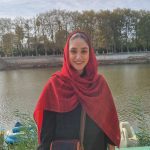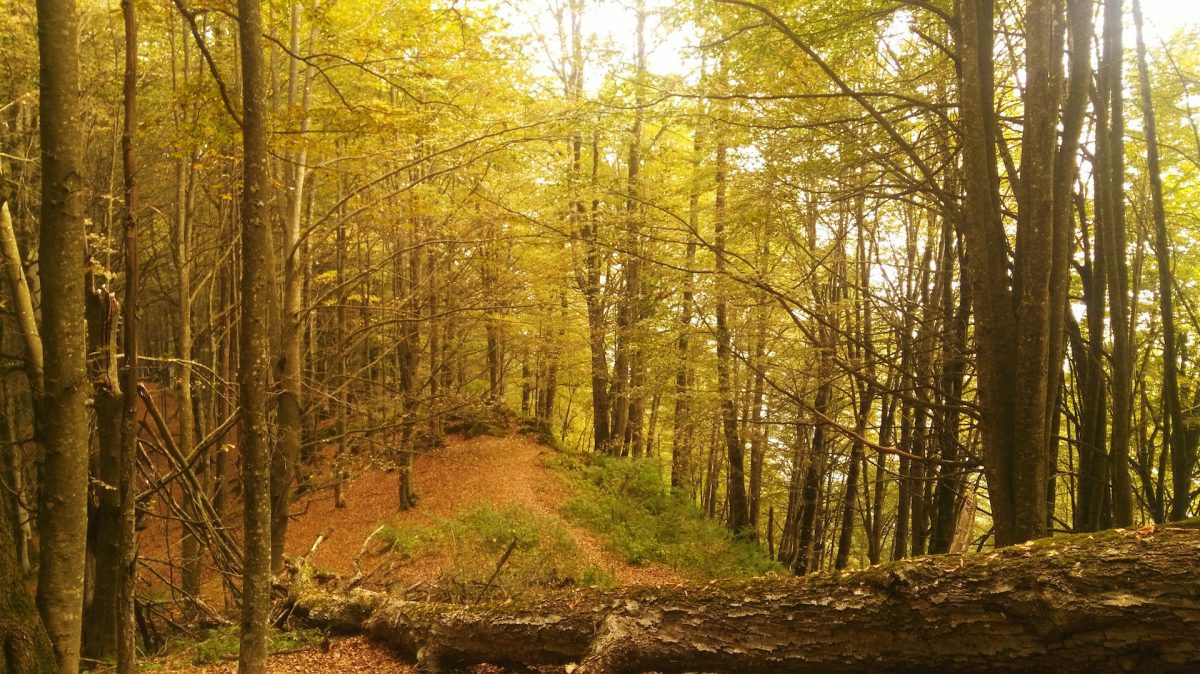Table of Contents
UNESCO World Heritage Sites are like a special list of really cool places worldwide, and Iran’s Natural Attractions have made it onto this list thanks to the UNESCO World Heritage Committee. This means that countries in UNESCO agree to take care of and protect these awesome places in Iran that are historically, naturally, and culturally important. Getting on this list isn’t just a pat on the back; it’s a serious promise. Not only do the leaders in Iran have a job to protect these spots, but it’s a joint effort with all the countries in UNESCO.
To make it onto this special list, Iran UNESCO World Heritage Sites have to meet certain rules. It’s not just about looking pretty; these places are like super special because they’re not ordinary landscapes. They have unique looks and backgrounds that set them apart. Think of them as living history books, telling the story of the Earth’s changes and stages. They’re also like nature classrooms, showing off how different plants and animals live and evolve. Plus, they’re home to some animals that need extra protection. So, being on the UNESCO World Heritage List is like a big thumbs-up to these places in Iran, saying they’re not just cool to look at, but they’re crucial pieces of our planet’s natural story.
Each site for inclusion in the UNESCO World Heritage List must have certain criteria, and these four criteria are for inclusion in natural monuments:
1. Be a unique natural phenomenon with exceptional backgrounds and aesthetics.
2. Be a prime example of the stages and changes in the history of geology.
3. Prominent examples of ecological and biological processes in terrestrial evolution, coastal and marine ecosystems, and plant and animal communities.
4. Include natural habitats important in terms of biodiversity and contain endangered species.
Iran’s Natural Attractions: Lut Desert and Hyrcanian Forests
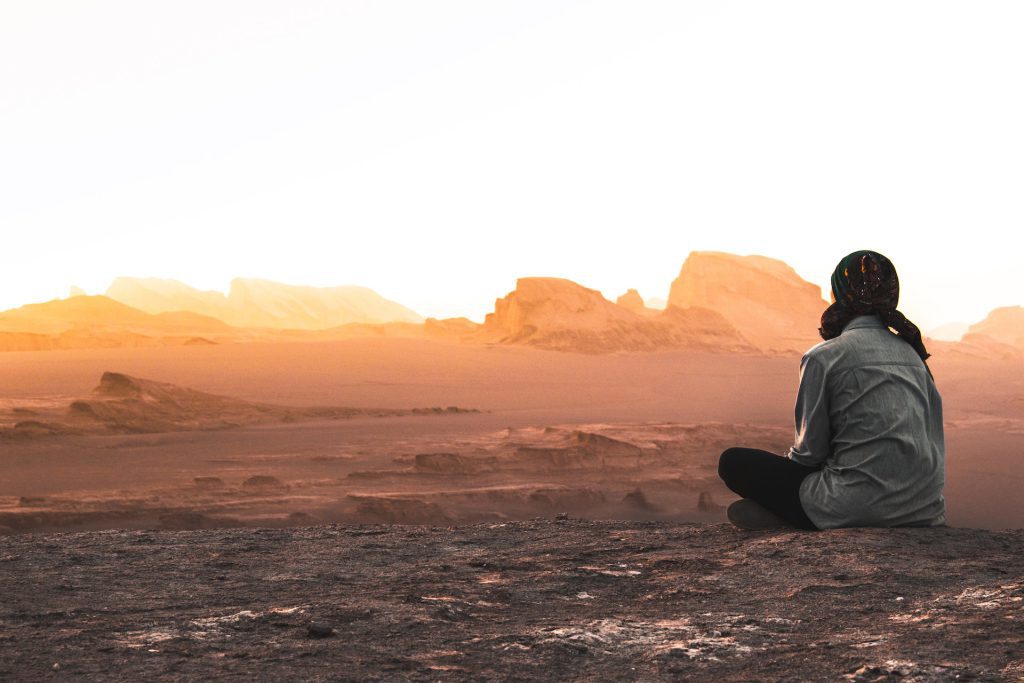
Lut Desert and the Hyrcanian Forest are super cool spots in Iran that UNESCO thinks are extra special. Loads of tourists from all around the world love to check them out. The desert is this huge area of sand with shifting dunes that change colors under the hot Iranian sun. It’s like a real-life magical desert.
Then there’s the Hyrcanian Forests, which are super old and recognized by UNESCO too. People who love nature dig these green forests with lots of different plants and animals. Both these places are like Iran’s awesome natural treasures, calling out to people who want to explore and see some incredible landscapes.
Lut Desert
Lut Desert, Iran’s first-ever UNESCO World Heritage site, was recognized on July 17, 2016, making it the 21st most impressive thing Iran has on the global list. This massive desert spans about 175 thousand square kilometers in the northeastern part of Kerman province, spreading across three other provinces – South Khorasan, Sistan, and Baluchestan, and Kerman, covering a big chunk, about 10%, of Iran.
This place isn’t just big; it’s famous for being super hot. In the years 2004 to 2009, it was named the hottest spot on the entire Earth! The peak of its heatwave happened in 2005 when it reached a crazy temperature of 70.7 degrees Celsius. This desert isn’t just a scorching hot place; it’s also a unique and impressive part of Iran’s natural beauty, earning its spot among the special wonders listed by UNESCO.
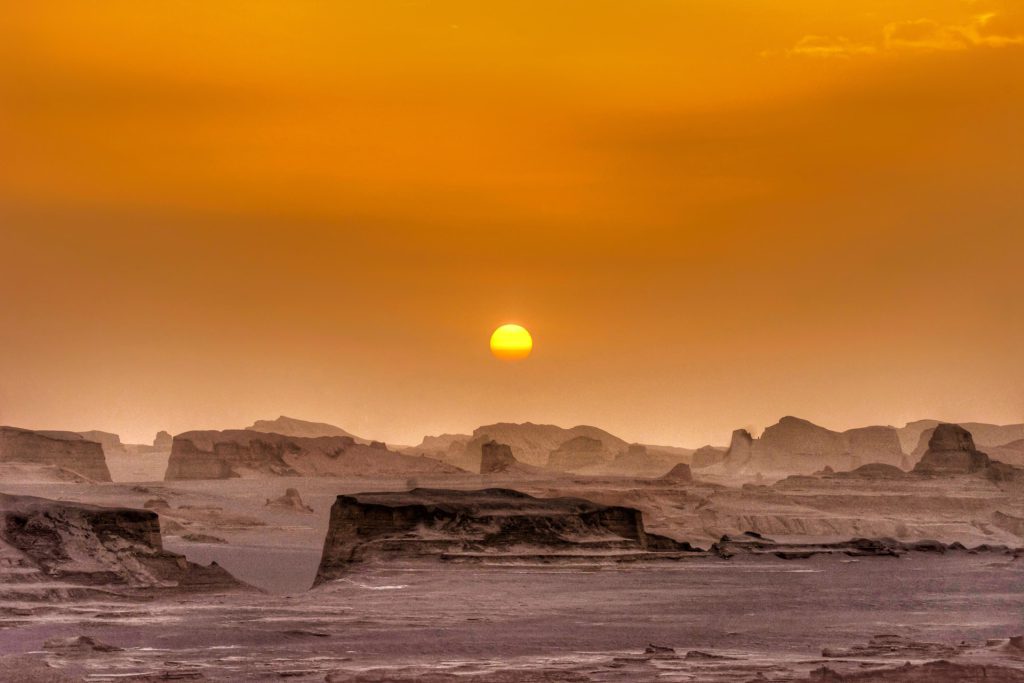
Lut Desert History
Deep within the Lut Desert lies a rich history, reaching back 5,000 years to the third millennium BC. The proof? Around 3,000 ancient structures are scattered across the region – castles, inns, and reservoirs that tell tales of the past. This desert, known as the world’s desert diamond, not only boasts these historical remnants but also harmonizes with nature’s untouched beauty.
Picture the natural wonders of Lut Desert as a story in three parts. Up north, it’s mostly desert and sand. Move along, and you’ll find the Central Lut, with its clumps and dunes telling stories of time passing. Head south, and the Southern Lut surprises with its greenery, a stark contrast to the desert stereotype. This three-part journey unfolds not just a history but also a varied and captivating landscape in the heart of this desert.
Lut Desert and UNESCO
The Lut Desert made it onto UNESCO’s list, thanks to Iran, meeting two out of four natural heritage criteria:
Firstly, it’s got something special going on – imagine areas that are just breathtakingly beautiful. That’s the Lut Desert for you.
Secondly, it’s like a history book for Earth, showing off major events in the past and the ongoing changes in the landscape. The desert is like a live show of the planet’s journey.
Now, let’s chat about the tough critters in the Lut plain. Even with the tricky weather, this place is home to all sorts of animals. From sand foxes to rabbits, sand cats, jards, sargepes, and hawks, it’s a lively neighborhood. Birds like flycatchers and cockatiels soar above, and snakes, camels, and agama serozghi keep things interesting on the ground. Don’t forget the scorpions – both golden and black ones – chilling in the sand. And if you look carefully, you might spot goats and jabirs, proving that life is buzzing in the heart of the Lut plain.
Shahdad Kalouts
In the heart of the Lut plain lies a truly captivating sight – the mysterious kalouts of Shahdad. Picture a natural city, where the landscape mimics a remote metropolis with closely packed skyscraper-like formations. It’s been nicknamed the City of Ghosts, the City of Fantasy, and even the City of Lut.
The cliffs of Shahdad reach impressive heights, resembling gigantic sand pyramids shaped by the patient work of wind and water over time. Each cliff tells a unique story, adding to the rich narrative of transformation that unfolds across the vast canvas of the Lut plain.
Hyrcanian Forests
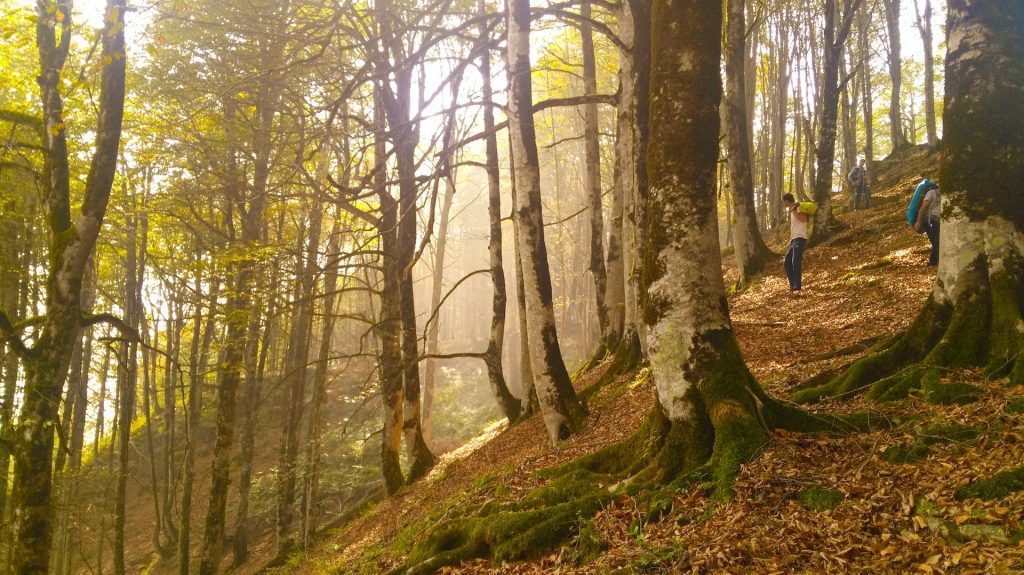
In a big decision during a meeting of UNESCO on July 5, 2019, the Hyrcanian Forests became the second natural treasure of Iran on the UNESCO World Heritage List. The experts from the International Union for Conservation of Nature (IUCN) gave their approval. These forests cover a huge area – 55,000 square kilometers. Two million hectares are in Iran, and 20,000 hectares are in Azerbaijan. They start from sea level and go up to 2800 meters high.
The Hyrcanian Forests, among Iran World Heritage Sites, are home to a tough tree called Quercus castaneifolia, and it’s a big part of the region’s special natural beauty. Sadly, almost half of these amazing forests have been destroyed. Right now, only 10.3% of them are protected. Most of the remaining forests are in Mazandaran province (53%), with 26% in Gilan province, and 21% in Golestan province, all in the north of Iran. It’s a crucial task for us to save these forests from disappearing, not just for their pretty looks but because they’re an important part of our natural world that we need to pass on to the next generations.
Hyrcanian Forests History
The Hyrcanian Forests are super old, dating back to around 40 million years ago, during the third geological period. Imagine them as living fossils or a natural museum frozen in time.
Their ancient age isn’t just cool history; it’s what makes them special. These forests have been around for millions of years, enduring the weather in northern Iran. They’ve been a safe home for lots of animals, especially birds. About 296 types of birds live here, including eagles, owls, gray ducks, hawks, vultures, woodpeckers, starlings, and spotted ducks that visit in the fall. One special bird, the Caspian pheasant, is in danger, and these forests are a crucial place for its survival. So, the Hyrcanian Forests are not just old trees; they’re a vital part of nature, keeping lots of different creatures safe and sound.
Hyrcanian Forests Flora and Fauna
The Hyrcanian Forests used to be home to 98 kinds of animals, some of them in danger, and some still doing well. Unfortunately, some types, like Meral, Kol, Goat, and Shoka, aren’t around much anymore. However, this special forest is the only place where you can find certain animals, like the black-tailed fox, leopards, wolves, boars, jackals, otters, hedgehogs, rabbits, badgers, mice, wild cats, and brown bears that may not see well but have a great sense of smell and hearing.
Now, when it comes to trees and plants, these forests have a whopping 150 different kinds. They can be grouped into summer green or deciduous forests, and the types of trees change depending on if you’re in a low area, on a slope, or up really high. Some of the stars of the show include beech, oak, maple, elm, alder, ash, hornbeam, rainbow, yew, linden, evangelical, larch, lilac, sagebrush, fig, and boxwood. Each of these adds its touch to the beauty of the forest, creating a colorful and lively home for all kinds of creatures.
FAQs about Iran’s Natural Attractions
Q1: What are UNESCO World Heritage Sites, and why are Iran’s Natural Attractions considered part of this list?
A1: UNESCO World Heritage Sites are special places recognized worldwide for their importance. Iran’s Natural Attractions, like the Lut Desert and Hyrcanian Forests, are on this list because they are exceptionally beautiful and ecologically important.
Q2: What criteria must Iran’s Natural Attractions meet to be included in the UNESCO World Heritage List?
A2: To make it to the UNESCO World Heritage List, places like Lut Desert and Hyrcanian Forests in Iran must be unique, have geological significance, show ecological processes, and have important habitats for plants and animals, including endangered species.
Q3: When did Lut Desert become a UNESCO World Heritage site, and what makes it special?
A3: Lut Desert became a UNESCO World Heritage site on July 17, 2016. It’s special because of its huge, shifting sand dunes, extreme temperatures, and a history that goes back 5,000 years with ancient structures still visible.
Q4: What is significant about Shahdad Kalouts within the Lut plain?
A4: Shahdad Kalouts are unique formations in the Lut plain that look like a natural city with tall sand structures. Also called the City of Ghosts, they add to the interesting story of how the Lut plain has changed over time due to wind and water.
Q5: When were the Hyrcanian Forests included in the UNESCO World Heritage List, and why are they important?
A5: The Hyrcanian Forests were added to the UNESCO World Heritage List on July 5, 2019. These ancient forests, covering a large area, are crucial for biodiversity. They house tough trees like Quercus castaneifolia and provide a home for diverse plants and animals, including endangered species like the Caspian pheasant.
Last Words: The Best of Iran’s Natural Attractions Registered in the UNESCO List
Lut Desert and the Hyrcanian Forest in Iran are awesome places that UNESCO really likes. Lots of tourists visit them. The Lut Desert has big areas of sand with colorful dunes under the hot sun. It’s like a real magical desert. The Hyrcanian Forests are very old and loved by nature fans for their green trees and animals. These spots are like Iran’s amazing natural treasures, inviting people to explore and see cool landscapes.
Embarking on a journey to explore the captivating natural attractions of Iran, specifically the menioned ones, promises an unforgettable experience. To Iran Tour stands as your dedicated companion in unlocking the best of Iran’s natural attractions. Our commitment lies in providing exceptional Iran Tours and Travel Packages that go beyond the conventional, offering a personalized touch to your travel experience.
Trust us to help you create memories that will last a lifetime and ensure that your time in Iran is nothing short of extraordinary. Experience the difference with To Iran Tour – where every journey is as unique as the traveler it belongs to.
